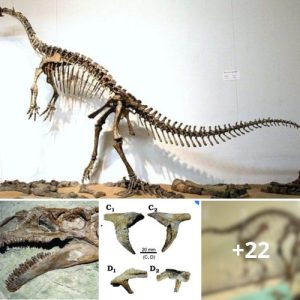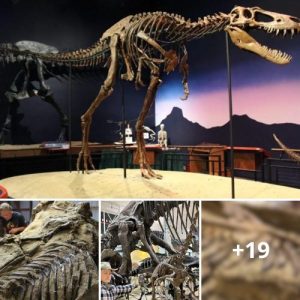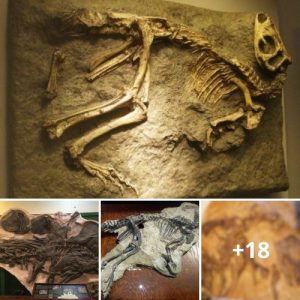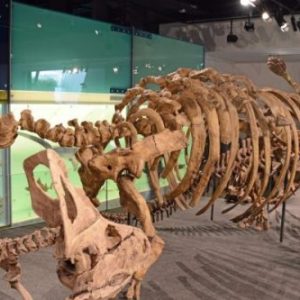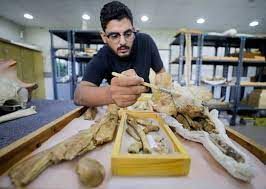
In the ever-evolving field of paleontology, groundbreaking discoveries continue to reshape our understanding of Earth’s ancient past. One such discovery that has captivated the world’s attention is the remarkable find of a 43 million-year-old fossil—a four-legged whale.
This extraordinary revelation, unearthed by archaeologists, challenges conventional wisdom and sheds new light on the evolutionary history of these majestic marine mammals. In this article, we will delve into the fascinating world of this remarkable find and its implications for our understanding of Earth’s history.
The Astonishing Discovery
The discovery of a 43 million-year-old four-legged whale fossil was made in a remote region known for its rich fossil deposits. A team of dedicated archaeologists was conducting an excavation when they stumbled upon what appeared to be a well-preserved set of bones. As they carefully uncovered the remains, it became clear that they had uncovered something truly extraordinary—a fossilized four-legged whale.
What sets this discovery apart is the fact that modern whales are known for their streamlined bodies and lack of hind limbs. However, this fossilized specimen sported four well-developed legs, a characteristic more commonly associated with land-dwelling mammals. The implications of this find are profound, as they challenge established theories about the evolution of whales and their transition from land to sea.
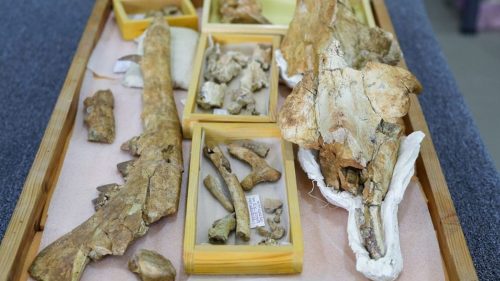
Unraveling the Evolutionary Mystery
Whales, as we know them today, belong to the order Cetacea, which includes two subgroups: toothed whales (Odontoceti) and baleen whales (Mysticeti). They are renowned for their aquatic lifestyle, with their limbs having evolved into flippers over millions of years for efficient swimming. This extraordinary fossil, however, throws a fascinating curveball into our understanding of whale evolution.
The discovery suggests that the ancestors of modern whales may have had a more complex evolutionary path than previously believed.
It challenges the conventional notion that whales evolved from terrestrial ancestors who gradually adapted to an aquatic environment, losing their hind limbs in the process. Instead, this fossilized four-legged whale hints at a different narrative—one in which some early whale species retained their leg-like structures long after transitioning to an aquatic lifestyle.
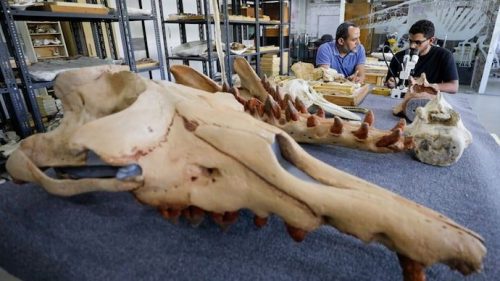
What Makes This Discovery Significant?
The significance of this discovery lies not only in its potential to rewrite the evolutionary history of whales but also in its broader implications for our understanding of evolution itself. It underscores the complexity of evolutionary processes and the idea that species can adapt in unexpected ways over time.
Furthermore, this four-legged whale fossil may provide crucial insights into the environmental conditions and ecological niches that early whales inhabited. By studying the anatomy and morphology of this ancient creature, scientists can gain valuable information about the challenges and opportunities faced by these early cetaceans during their transition from land to sea.
The Role of Scientific Investigation
Scientific investigation is at the heart of unraveling the mysteries of this remarkable discovery. Paleontologists, biologists, and geologists are collaborating to analyze the fossil in meticulous detail. Advanced imaging techniques, such as computed tomography (CT) scans, are being used to create three-dimensional reconstructions of the fossilized remains. These efforts will help researchers better understand the anatomy, locomotion, and lifestyle of this ancient four-legged whale.
Conclusion
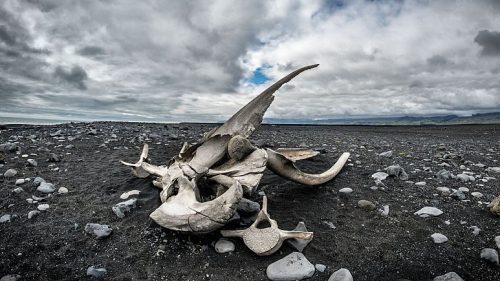
The discovery of a 43 million-year-old four-legged whale fossil challenges our preconceptions about the evolution of these magnificent marine mammals. It invites us to rethink the conventional narrative of whales’ transition from land to sea, highlighting the complexity of evolutionary processes. As scientists continue to investigate this extraordinary find, we can look forward to gaining deeper insights into the history of life on Earth and the fascinating journey that led to the development of modern whales. This discovery serves as a testament to the enduring curiosity of the scientific community and the ever-expanding horizon of human knowledge.

